Dr Pieter Steyn (South Africa) and Dr Brane Semolic (Slovenia)
Introduction
In order to be competitive organizations are progressively adopting strategies that focus on their core business. They consequently build their internal capacities based on core competencies, while partnering with other organizations for non-core components that constitute their final products and/or services. In this way a virtual network of partner organizations is formed with the purpose of timeously providing high quality products and/or services at the lowest possible cost. This approach is regardless of whether an organisation utilises a project driven, non-project driven, or hybrid (a combination of the two) business model, and calls for high levels of coordination, integration, and collaboration in the network of partners to achieve synergy.
The trend holds many economic advantages. It leads to growth in large and small partner organizations, but importantly also stimulates the creation of small and medium sized enterprises, which augers well for job creation and economic growth. Importantly, wealth is shared on the basis of competencies. Moreover, it inspires what the current authors describe as, “collaboratism” in an emerging “collaboratist economy”, and constitutes tempering of the current capitalist economy. These terms are not to be confused with the so-called “collaborative economy”, which is a sharing concept related to marketing. Instead, “collaboratism” is a leadership, management, and governance system related to partner organizations operating in a virtual network business model to create, produce, and deliver products and/or services to customers in the marketplace. The system is characterised by an initiating organization acting as the principal partner in the virtual network of participating organizations, and founded on project-, programme-, and portfolio management principles.
Effective and efficient leadership, management, and governance of modern day organizations are profoundly important success factors for optimal strategic performance. How to achieve this has remained a complex challenge for executives and senior management of organizations in the private and public sectors. Steyn (2001) argues for programme management to move beyond its original function of managing cross-functional portfolios of projects by including the supply chain, the processes of which should likewise be shaped cross-functionally. With the dawning of the new millennium it became clear that globalization and the information age were impacting heavily on the way organizations were organized and managed. Accelerated information flow inspired change, requiring management decisions to be made more frequently and speedily, accompanied by increasing levels of coordination and integration. This made it imperative that new business models, supported by innovative governance and creative organizational structures, be devised to mitigate the complexity and associated risks. Moreover, Semolic (2010) stresses that the innovative governance and creative organizational structures should be combined with a virtual network of partner organizations to ensure collaboration and synergy.
To achieve ultimate success, the current authors regard superior strategic leadership as being of paramount importance. It constitutes the most profound tactic that modern day organizations can utilize to become highly competitive and achieve superior productive performance. Consequently, managing organizations through projects and programmes became the integrative implementation link between corporate strategy, business strategy, and operations strategy. External to the organization the marketplace gradually experienced an increase in volatility. Organizations could no longer rely solely on prescriptive strategies such as profit maximization, but had to progressively rely more on emergent approaches to strategy development and implementation. With the speed of change impacting every organization, the operational environment dissolved into a series of events which frequently orchestrated chaos and confusion.
Consequently, traditional organizational forms and ways of managing them were becoming obsolete. This posed a profound leadership, management, and governance challenge. Changes in the external environmental dimensions such as economic outlook, sociocultural issues, politics, ecology and technologies, also impacted more heavily on the way modern organizations should be governed. Improved technologies probably had the greatest impact. This applied particularly in the area of information technology, which motivated organizations to re-engineer their systems, structures, business processes, and cultures. Moreover, it required that the knowledge, skills and behaviour of the human resources component in the organization be continuously improved to maintain a competitive advantage, coupled with effective and efficient knowledge management in superior governance systems.
The current authors argue that the emerging “collaboratist economy” requires a move away from rigid approaches to leadership, management, governance, and cumbersome traditional organization forms. These impede the flow of information and managerial decision-making. Moreover, leadership and management in traditional (or classic) organizations often lack strategic purpose and customer focus. Building on the platform of an accelerated technological revolution, the wave of innovation, entrepreneurial bio-engineering and knowledge explosion means that leaders and managers have to cope with an ever increasing culture of risk and complexity. Having to lead and manage in this emergent situation of risk and complexity, governance and organizational structures are compelled to undergo transformation and change at an accelerated pace.
The new paradigms and structures have to be highly flexible, agile, collaborative, coordinative, integrative, and innovative, plus create systemic synergy. This requires even more effective and efficient utilization of the Total Quality Management (TQM) principles of having a customer focus, involving employees (and virtual partner organizations) in team work, decentralizing managerial decision-making, focusing on continuously improving the products, services, systems and processes of the organization, and creating a learning culture that stimulates human creativity and knowledge management. This situation demands a compelling shift towards the emerging “collaboratist economy” as defined by the current authors.
Stock and Lambert (2001) describe supply chain management as an interactive, complex systems approach that requires simultaneous consideration of many trade-offs. Supply chain management integrates key business processes from suppliers to end users and provides products, services and information that add value for customers and other stakeholders. They see the structural dimensions of the supply chain as the participating members, its cross-functional processes, and the different types of process links across the supply chain. The cross-functional processes are identified by them as ‘product development and commercialization, order-fulfilment, procurement, demand management and capacity planning, customer relationship management, customer service management, manufacturing flow management, and returns’. Importantly, they identify executive support, leadership excellence, commitment to change, and empowerment as key requirements for successful supply chain management, and regard information as a key enabler of supply chain integration.
However, they do not distinguish between “project driven”, “non-project driven”, and “hybrid” (a combination of the two) supply chain business models as defined by Steyn (2010, 2012, and 2013), but focus solely on the “non-project driven” business model organization. This is probably due to a dearth of knowledge regarding organizations that do project work for external customers, i.e., organizations that employ a “project driven” business model. Moreover, they fail to propose a creative management model for the cross-functional supply chain portfolio, implying the utilisation of the ad-hoc ‘old matrix management’ as the communication link across it. The impression that this ad hoc supply chain management is generally accepted or condoned emerges. The current authors perceive this differently. Instead, the current authors opine that formalized programme management, as averred by Steyn (2001, 2010, 2012, and 2013), should be utilized for cross-functional supply chain management instead of an ad hoc ‘old matrix management’ approach.
Mee (1964) was among the first to describe the matrix organisation, referring to the nature of a matrix as including a ‘web of relationships’ that replaces the line and staff relationships of work performance. Cassidy (2012) describes what she terms ‘old matrix management’ as the focus on the vertical dimensions in an organisation and the belief that senior management need to get things done in an ad hoc way. The ‘old matrix management’ paradigms had many drawbacks and fell out of favour during the 1980s. Harold Kerzner (2008) is very critical of the ‘old matrix management’ approach, and noted its dysfunctionality as not having a proper focal point for the management of projects. Moreover, he is critical of the structural and behavioural deficiencies of the system in terms of authority, responsibility, and accountability, as also the management problems created by the vertical nature of the system. It was soon realised that, in order for cross-functional project work to be successful, the project managers had to be in full control in order to achieve optimal coordination and integration of the activities to mitigate the associated complexity and risk. Hence the importance of programme managing portfolios of cross-functional processes (both project and supply chain) as stressed by the current authors.
“Managing High-Technology Programs and Projects” by Archibald (1976), is generally regarded as a ground-breaking publication for project and programme management. In 1976, the term ‘program’ was described as a ‘long-term undertaking’ usually consisting of more than one project, or often used synonymously with project. Wideman (2003) avers that by 2003 programmes and projects were seen as strategic investments and management in a portfolio. He opines that this view introduced the fascination with portfolio management, and concomitant advice on multi-project management under the direction of an enterprise-wide project management office. The difference in approach and perception between 1976 and 2003 is clearly illustrated. The current authors support the opinion of Archibald (2008) that organisations in the past failed to recognise that skills in managing projects, and skills to operate and develop the project management systems which support the project manager, must be developed concurrently with other organisational systems (see PM World Today, Featured Interview – October 2008, Part 2: 2). Consequently, the current authors see the matrix as spanning across several organizations in a virtual network of partners, incorporating a highly specialised programme management governance structure to cope with the demands of the emerging “collaboratist economy”.
Evolution of Programme Management to include a Virtual Networks of Partners
Building on Archibald’s (1976) ground-breaking publication, Murray-Webster and Thiry (2000) argue that programme management provides an integrative organizational framework for project portfolios through a collection of change actions, which are purposefully grouped together to provide a vehicle to ensure that strategy is implemented. They propose three ways for organizations to shape their project portfolio programmes cross-functionally. These are the capital expenditure (capex)-, the strategic or goal-oriented-, and the innovative continuous improvement project portfolio. Steyn (2001) avers that a fourth initiative in the management-through-programmes approach should be added to the above, i.e., the supply chain portfolio as illustrated in Figure 1.
The supply chain portfolio is operational in character and focusses on customer service effectiveness and efficiency. It is grouped around operational processes that are linked to customer service initiatives, capacity support, and the organization’s market segments. The major benefits derived from this approach are effective and efficient integration and coordination of multiple supply chain customer-service operational activities in continuous processes, as opposed to the three preceding initiatives that focus on rendering deliverables to customers through finite projects.
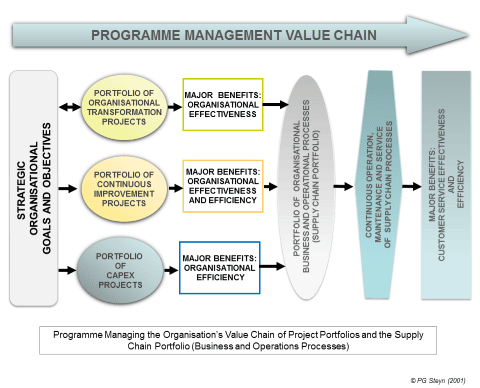
Figure 1: Programme Managing the Organizational Value Chain through three Cross-functional Project Portfolios and a Cross-functional Supply Chain Portfolio (adapted from Steyn 2001).
The four programme configurations illustrated above are not mutually exclusive. They support each other through integration and coordination in the internal and external environments, and have a further advantage of linking an organization’s strategic vision and mission systemically. Moreover, the four programme configurations can be applied to both public and private sector organizations. Semolic (2010) purports that a further initiative, the project portfolio for specialized product development organized as a virtual network of partners be added to the model. He stresses that specialized product development cannot always be successfully achieved in the cross-functional product development and commercialization process of the supply chain. Often an organization experiences a dearth of resources that others can provide through partnering. Semolic (2010) avers that partnering for product development amongst organizations prompts the creation of a project portfolio constituting a virtual network of partners that serves to stimulate innovations and improved competitiveness. This initiative adds an additional way to those proposed by Murray-Webster and Thiry (2000) in which organizations shape their project portfolios. Figure 2 depicts the value chain schematic illustrating the four project portfolios proposed by Murray-Webster & Thiry (2001) and Semolic (2010), and the supply chain portfolio proposed by Steyn (2001 and 2010).
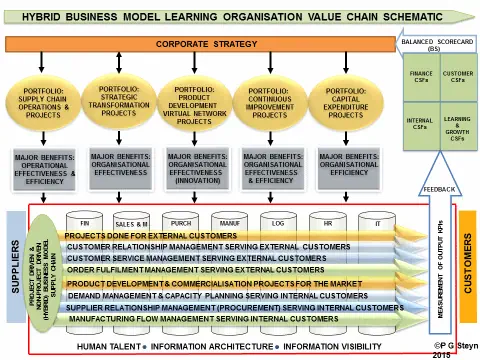
Figure 2: The Value Chain Schematic Illustrating the Project Portfolios and “Hybrid” Supply Chain Portfolio (Adapted from Steyn 2001, 2010, 2012, and 2013).
Steyn (2003, 2010, 2012, & 2013) incorporates the Figure 2 initiatives into a ‘balanced scorecard / programme management” system, governed by a Chief Portfolio Officer (CPO) at the executive level of the organization. He avers that organizations should also shape its cross-functional processes of the supply chain portfolio into a programme management structure, based on a business model of choice. As previously alluded to, an organization’s business model can be “project driven”, “non-project driven”, or “hybrid”. Figure 3 illustrates how the different programmes are shaped in a “hybrid” business model organizational structure (which has both a “project driven” and “non-project driven” component in the supply chain), based on the value chain schematic in Figure 2. Organizations operating in accordance with the “hybrid” business model do projects for external customers, and sell products and services to customers in the market place.
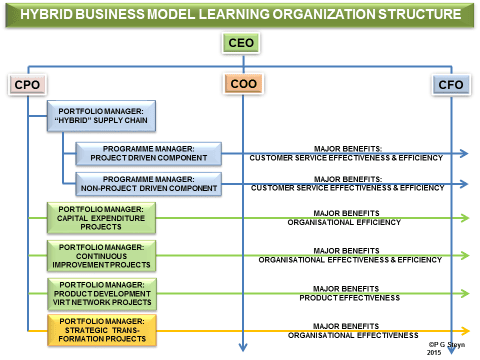
Figure 3: Portfolios of Programmes in the “Hybrid” Business Model Organizational Structure (Adapted from Steyn 2010, 2012, and 2013).
Governance of Virtual Organization Systems
A significant study was conducted by IBM in 2008 entitled: “IBM Global CEO Study: The Enterprise of the Future”, where over 1000 CEOs from around the world were asked their opinions. The study found that CEOs were rapidly repositioning their businesses to capture growth opportunities more effectively and efficiently. Moreover, all CEOs indicated that they were adapting their business models, and two thirds were implementing extensive innovations, while reconfiguring to take advantage of global integration opportunities. The results of the IBM study indicate that CEOs were moving aggressively towards global business designs, deeply changing capabilities, and partnering more extensively. Moreover, Semolic and Imtiaz (2010) aver that modern enterprises are permanently scanning their business activities and the situation on the global market, and searching for opportunities to improve their competitiveness. In the wake of the global financial down turn enterprises are facing constant competition from both regional and global markets. This demands speeding up the pace to innovate, produce, and provide higher quality products and services with a higher degree of customizability.
Duin (2008) avers that many studies define the virtual organizations network as a temporary consortium of partners from different organizations established to fulfil a value adding task, in terms of product or service to customers. A virtual organization is an emerging business model, based on collaboration between previously unconnected organizations or persons. A multi-partner collaboration project could bring in positive effects like opportunities to improve creativity and innovation as well as reduced costs and lead-time in optimizing solutions based on partners’ knowledge and core competences (Palot, Sandoval, 1998).
Skills and core competencies are shared, and modern communication technology is utilized to master the processes of collaboration. Teams from different locations (also countries) create opportunities for collaboration in development of new products, and/or the production of goods and/or services. Semolic (2012) argues that innovative changes are driven by sustainable collaboration with complementing entities possessing relevant knowledge and products in the holistic value chain (see Figure 4). The same holds true for all industries that need to collaborate with stakeholders by collective realignment of the organizational resources to innovate and adopt more flexible business processes. Modern organizations should be seen as integral parts of global value chains, where specialization, outsourcing and partnering are key elements.
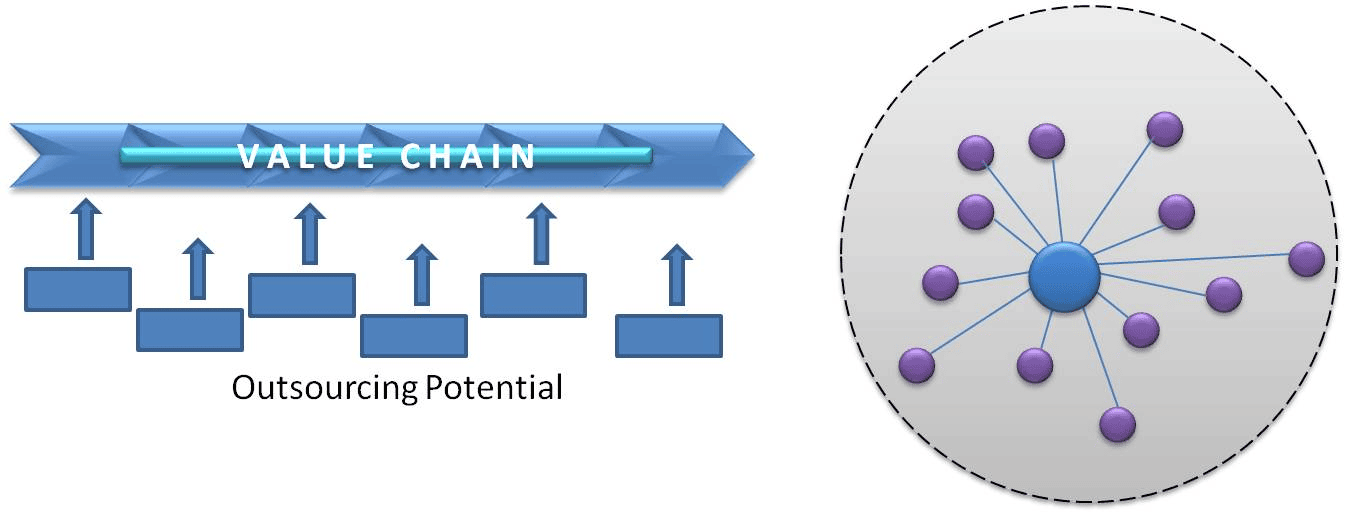
Figure 4: Outsourcing – networking potential (Semolic, 2012)
The assignment of the role that individual organizations assume in the virtual organization is of utmost importance, and goes hand in hand with the ability to gain appropriate resources for achieving the purpose. The same applies to goal definition and the structure of the virtual organization. The goals, purpose and strategy of the initiating partner organization need to be clearly defined. Risk analysis should be done and the benefits of strategic importance to be gained from the partnership arrangement clearly defined. The specific role of the initiating partner organization (the initiating organization) must be predetermined. Of utmost importance is the choice of partners in the virtual organization, and the alternatives at the initiating organization’s disposal of entering into a partnering relationship. Care should be taken that the cultures of the participating organizations are compatible. Should the relationship arrangement be a joint-venture or subcontracting? The answer to this question will have an influence on the governance structures to be created.
The current authors aver that the value chain of the organization must be linked to virtual networks of partner organizations to complete the “collaboratist system” for product/service development on the one hand, and producing products/services on the other hand, where the Chief Portfolio Officer plays a critical governance role. In addition to accelerating the pace of innovation and production, higher quality products and services will emerge. Moreover, wealth will be spread to small and medium sized entities leading to job creation, resulting in tempering of the capitalist economy towards a “collaboratist economy”.
Semolic (2012) purports that regional and global business integrators are represented by different organizations and entrepreneurs who are providers of various industrial products and services. Figure 5 illustrates different roles of an organization or entrepreneur in a virtual organization. It can be integrator, agent, specialist, standard supplier, etc. The situation depends on global innovativeness, entrepreneurship, leadership, availability of adequate resources, and support from components of business ecosystems.
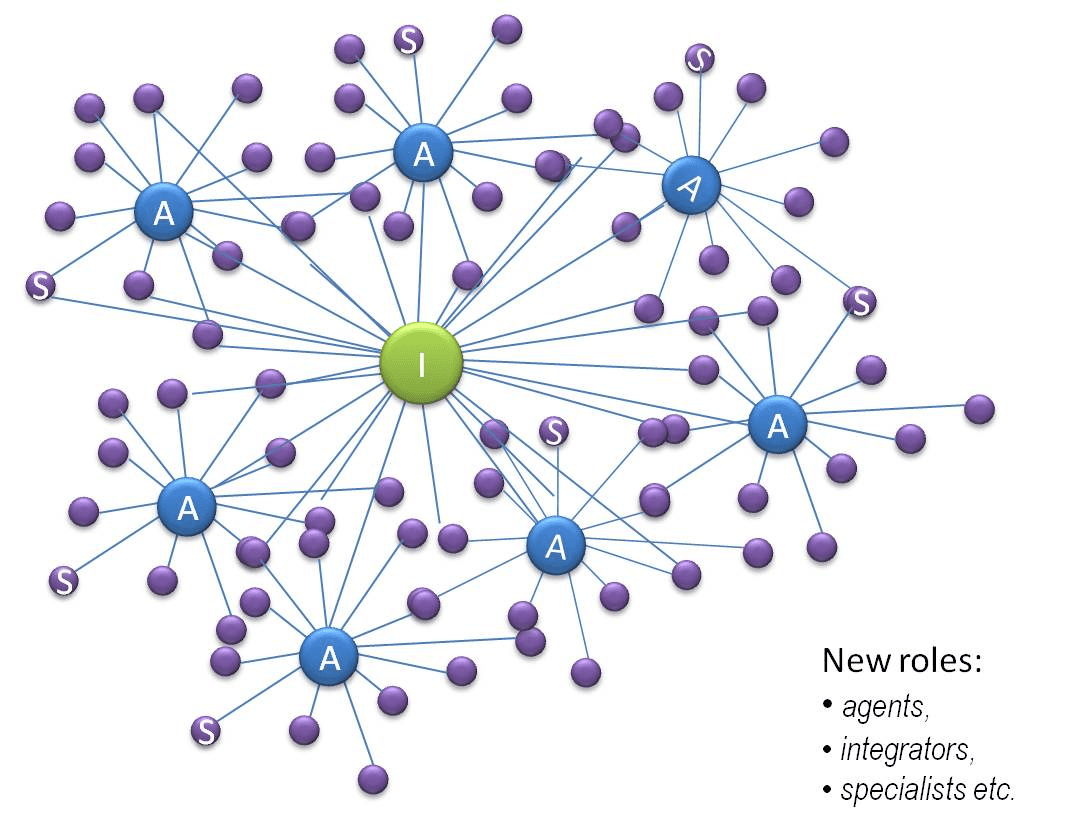
Figure 5: Roles in virtual organization (Semolic, 2012)
The entrepreneurial process of the virtual network of partners consists of primary and supporting business functions. Primary business functions range from research and development of the product and/or service, to its production and sale on the market. The supporting business functions include business planning, organizing, financing, managing, and supervising. The governance system exists from the time that the virtual network of partners becomes operational. Moreover, leadership and management jurisdiction differs largely from that of a classical organization, and exceptional leadership skills are particular important. Although it may be distributed among several participants, coordination, integration, and collaboration become the dominant responsibility of the initiating organization in a virtual network of partners. Management skills and experience in programme management activities are of paramount importance. This means that managers must have exceptional knowledge of and experience in coordination and integration of networking activities. Moreover, leaders and managers must possess a keen understanding of the culture and abilities of partner organizations.
Governance of a virtual organization is generally complex in nature. According to Semolic and Imtiaz (2010) the collaborative work can be organized in the form of different collaboration platforms to support agreed areas of collaboration. Semolic (2012) recognizes four levels in a virtual collaboration platform structure:
- Level of virtual collaboration platform business case,
- Level of virtual collaboration platform organization and governance,
- Level of virtual resource pool and open innovation communities and
- Level of collaborative platform digital ecosystem.
Virtual collaboration platforms are designed to support performance of collaborative business partners on different areas of collaboration. Like collaborative research and innovation programmes, collaborative projects, collaborative products, technologies etc.
Collaborative research and innovation programmes/projects are presented here as an example of business partnering efforts. This demonstrates a situation of programmes/projects where business partners are collaboratively working on an agreed business case implementation. The business case is jointly developed and co-created according to the business needs, and available resources of each programme/project partner. The level of partner involvement depends on each partner’s motivation, competences, available resources and the multilateral programme/project agreement. The business and project risks are shared among all collaborative partners. It is managed and coordinated by one collaborative partner – the programme/project initiator. These kinds of programmes/projects are co-financed by partners, and external organizations. Typical examples of collaborative programme/projects are industry research and innovation projects, regional infrastructure development projects, etc. Figure 6 illustrates the complexity levels of collaborative research and innovation programme/projects. Six levels of collaborative complexities are recognized, as follow:
- Physical complexity,
- Technological complexity,
- Business process complexity,
- Coordination and management complexity,
- Governance complexity and
- Stakeholders’ complexity.
Moreover, Semolic (2015) stresses that in collaborative research and innovation projects the complexity is often very high and needs careful assessment because of related potential project and business risks.
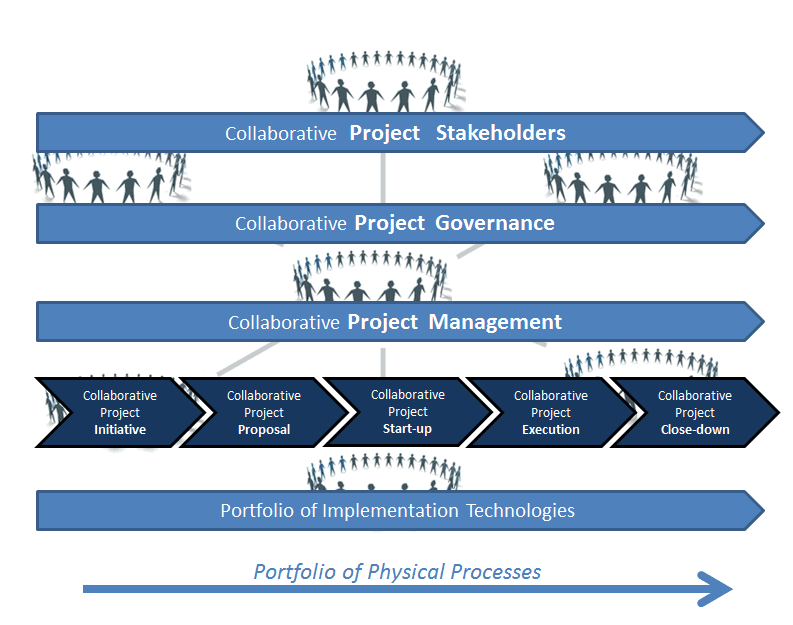
Figure 6: Collaborative projects – levels of complexity (Semolic, 2013)
Open innovation communities are critical components of the high performance virtual organization. Community is the condition of sharing, having things in common or being alike in some way – a community of interests (Oxford Dictionary). Modern open innovation communities deal with a mix of business, professional and social communities, needing to be balanced, harmonized and well-coordinated. These communities are formal and informal (see Figure 7). The formal communities are embedded in the formal organization and inter-organizational business processes of participating collaborative partners. The informal communities need to be organized as an extension of the formal ones. The use of Chesbgrouh’s (2006) open innovation concept of work is highly recommended. Open innovation communities and related networks need to be organized and coordinated properly to efficiently exploit their contributions. They need to be clearly positioned as an extension of the existing formal organization. The efficiency of a collaborative system and its openness to the others from the organizational environment are sensitive to regional cultures. By using Hofstede’s (1994) classification of cultural dimensions, more obstacles and problems can be expected in regions with a high uncertainty avoidance culture.
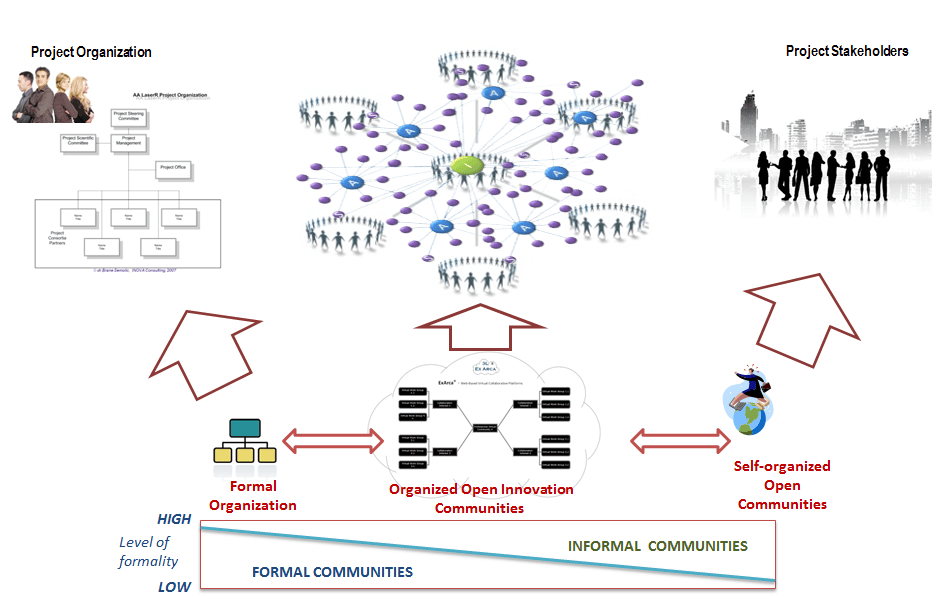
Figure 7: Formal and informal open innovation communities (Semolic, 2013)
Emerging virtual organizations generate possibilities for introducing innovative business models that provide more efficient use of available inter-organizational (value chain) resources, their innovation potential, and the innovation potential of stakeholders. Semolic (2014) avers that innovation potential alone is not sufficient if not followed by sound collaborative strategies, programs / projects generating benefits, and value creation for all collaborative partners and their stakeholders. This is the “collaboratist economy” in action, where benefits (and wealth) are shared by all partner organizations (large and small) in the virtual network. This is illustrated by the “Virtual Innovation Community Hexagram” shown in Figure 8. The model is based on the symbol of mandala called “Shatkona Yantra” found in ancient South Indian Hindu temples. Mandala shows the harmony of the universe. The upward triangle, Shiva, represents the masculine side of God. The downward triangle, Shakti, represents the feminine side of God. The first triangle represents the Supreme Being, and the second triangle the world seen as Mother Nature. Existence is impossible without the presence of both sides, which provide harmony and existence.
The concept and message were utilised as a basis for the research innovation community’s critical success factors for identifying and supporting “Virtual Innovation Community Hexagram” development. The first triangle shows the innovation potential of the recognized and available research and innovation communities, the identified collaborative mission and vision, and the collaborative knowledge base available to collaborative partners. The innovation potential is useless unless followed by the second triangle – innovation power. The elements of innovation power are collaborative strategy, collaborative programs and/or projects, and collaborative benefits. The circle illustrates interrelations and harmony of both triangles with recognized critical success factors. The resulting “Virtual Innovation Community Hexagram” provides a basic input and guideline for virtual organization development, operation, coordination and governance, i.e., for creating the “collaboratist system”.
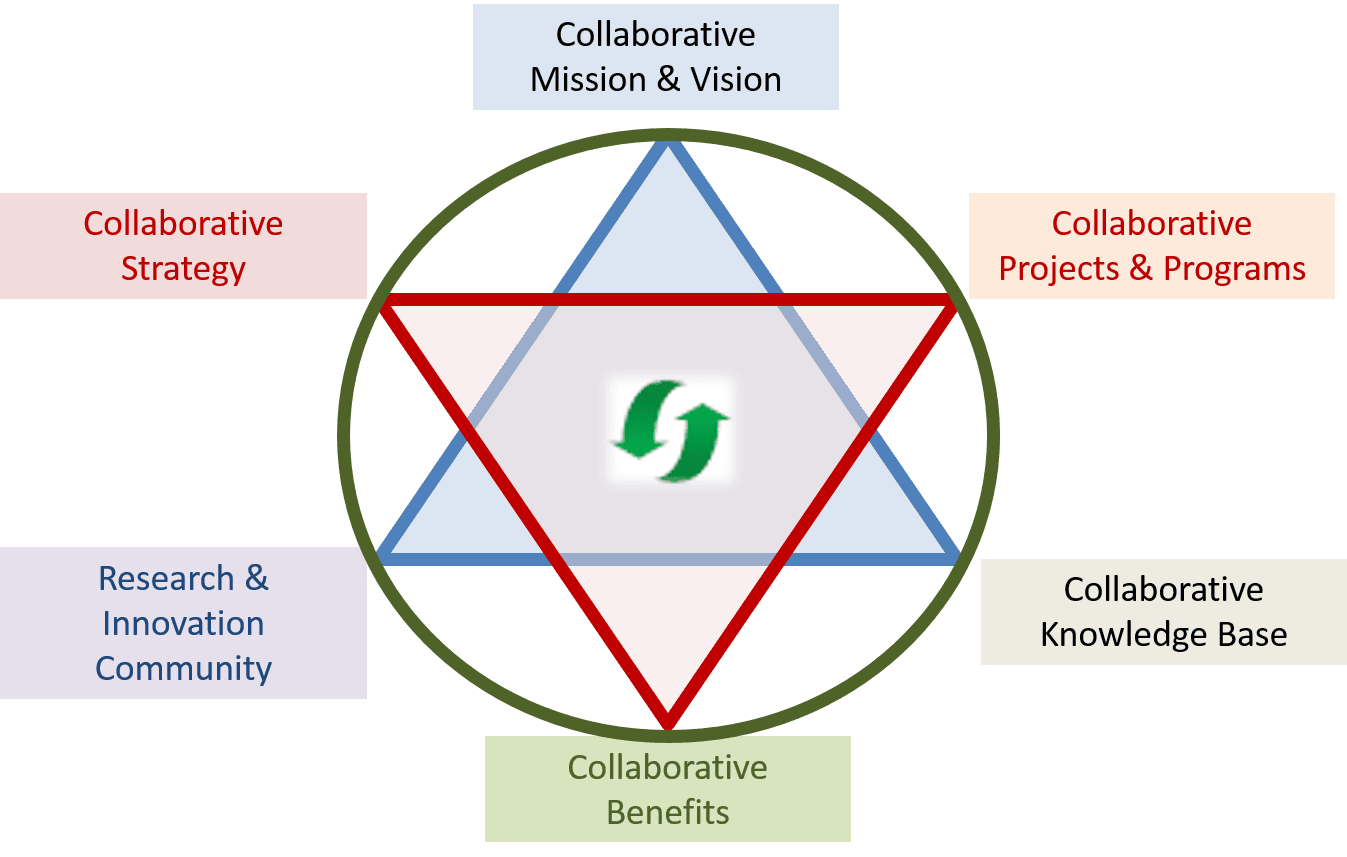
Figure 8: Virtual Innovation Community Hexagram (Semolic, 2014)
In the knowledge based “collaboratist economy”, intrinsic personal satisfaction is one of the critical success factors of global competitiveness. Inclusion, trust, collaboration, co-creation, customer satisfaction, and “win-win” approaches are the main characteristics of the desired virtual organizational culture. The key factor of success in this development stage is the involvement of the people. Competent and highly motivated people (internal and external) can provide results which reach beyond owner, manager or client expectations. Therefore, leadership acumen plays a profoundly important role in the level of success achieved.
Capital is the key driver and generator of the wealth in classical industrial economies. The world is in the midst of transforming away from the classical industrial age, and entering the knowledge based “collaboratist economy” where global competitiveness is powered by knowledge and innovations. In this emerging era money is just the enabler of innovation, and cannot itself generate premium innovative products, technologies and business models. Modern products and technologies are complex and need strong involvement from all partners in the value chain. These communities represent innovation potential which needs to be exploited and governed properly. The key words of the “collaboratist economy” are knowledge, innovation, talent, collaboration, co-creation, openness, support, and trust, indicating the profound importance of leadership excellence in the “collaboratist system”.
The current authors’ proposed programme management-based “collaboratist system” has great significance for leading, managing, and reviewing organizational performance in the “collaboratist economy” enterprise of the future. Programme management provides the mechanisms whereby effective and efficient planning, monitoring, controlling, coordinating, and integrating of the cross-functional processes of the initiating partner’s portfolios, and the linked processes of the virtual network of partner organizations, can be achieved. Moreover, the programme management approach enables effective and efficient measurement of key performance indicators (KPIs), weighing these up against critical success factors in the balanced scorecard of the initiating organization to appraise benefits of strategic importance, and doing network-wide reviews that lead to performance improvement. Clearly, the “collaboratist system” approach demands leadership and management acumen profoundly more sophisticated than traditional forms of organization. Judging from the results of the IBM study of 2008, it is clear that there may still exists a serious dearth of leadership and management expertise to effectively counter the complexity and concomitant risks of the emerging “collaboratist” economic environment.
Part of the solution is for CEOs, and the full staff complement of the enterprise of the future, to become well versed in the principles of portfolio-, programme-, and project management, while simultaneously transforming the organisation to operate cross-functionally. Steyn (2012) warns managers attempting to transform an organization, not to focus only on changing structure. Such efforts have a high failure rate due to an inability to encourage the right behaviours. Success depends largely on having leaders and managers on board who display high levels of consideration and initiating structure. This will create synergy and enable good relationships and collaboration. The cultures of traditional organizations do not support strategic value chain management in a virtual network of partners, and the challenge is to adopt system-wide learning organisation paradigms and structures.
Conclusion
The current authors opine that to achieve the abovementioned requires exceptional human talent as discussed above, coupled with comprehensive re-education of the human capital at all levels. Importantly, the critical governance role of a Chief Portfolio Officer at the executive level of the initiating organization in a virtual network of partners, is of paramount importance. It would be unthinkable that portfolio managers operating in a “collaborist system” report to the CEO who, as confirmed by the 2008 IBM survey, is “bombarded by change” and “struggling to cope”. To make a meaningful impact on synergy in the operations of the “collaboratist system”, the CPO should come from the ranks where a cross-functional operational mind-set prevails. Moreover, the said collaborative mind-set of the CPO, in addition to being profoundly knowledgeable regarding learning organisation requirements, should display high levels of leadership consideration and initiating structure as advocated by the Ohio State studies. This will provide significant support to the Chief Executive Officer (CEO), as well as the Chief Operating Officer (COO) and Chief Financial Officer (CFO). Moreover, strategic appraisals and reviews at the executive leadership level will be significantly strengthened.
Figure 9 illustrates the matrix links between the initiating partner’s programme management structures, and other partner organizations in the virtual networks. More than one virtual network can exist simultaneously, depending on the business model employed by the initiating partner organization, i.e., for product development project work, and supply chain operations. The figure illustrates the “hybrid” business model portfolio/programme management structures, reflecting the project driven and non-project driven components of the supply chain. Therefore, the “hybrid” business model supply chain can have two virtual networks of partners. If the organization also employs a portfolio manager for specialized product development projects, a third virtual network of partners will be formed for that purpose. However, when an organization solely employs a project driven business model, or alternatively a non-project driven business model, only one virtual network of partners exists for the supply chain. Should the organization employ a portfolio manager for specialized product development projects, an additional virtual network of partner organizations is formed for that purpose.
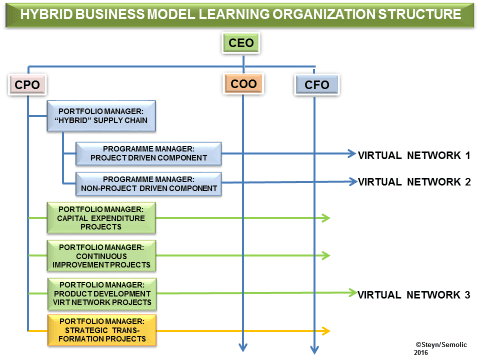
Bibliography
Archibald, R. 1976. “Managing High- Technology Programs and Projects”. (1976, 1992, and 2003).
Archibald, R. 2008. PM World Today, Featured Interview – October 2008 (Vol X, Issue X) Interview with Russ Archibald, Project Management Pioneer, Part II. “The Formation & Early Years of PMI”.
Cassidy, Cathy. 2012. “The New Matrix Management”, (Matrix Management Overview). Director of MM 2.0™ Services, International Matrix Management Institute. USA.
Chesbgrouh, H. 2006. “Open Innovation Researching a New Paradigm”. Oxford University Press, New York, ISBN 987-0-19-929072-7.
Duin, H. 2008. “Systemic Strategic Management for VBEs in the Manufacturing Sector”. In Camarinba-Matos, L. M. & Picard, W. (Eds.) Pervasive Collaborative Networks, IFIP TC 5 WG 5.5. Ninth Working Conference on Virtual Enterprises, Sept. 2008, Poznan, Poland. Springer, New York.
IBM Corporation, 2008. “IBM Global CEO Study: The Enterprise of the Future”.
Hofstede, G. 1994. “The Business of International Business in Culture, International Business Review”. Volume 3, Issue 1, Elsevier Ltd.
Kernzer, H. September 2008. “Project Management, A Systems Approach to Planning, Scheduling, and Controlling”. 7th Edition, Wiley.
Mee, John F. 1964. “Matrix Organizations,” Business Horizons, 7 (2).
Murray-Webster, R. and Thiry, M. 2000. “Gower Handbook of Project Management, 3rd Edition, Chapter 3, “Managing Programmes of Projects”, Gower publishing, England, Ed. Rodney Turner.
Naslund, D. and Williamson, S. 2010. “What is Management in Supply Chain Management? Critical Review of Definitions, Frameworks and Terminology”, Journal of Management Policy and Practice Vol. 11 (4).
Palot, M., Prinz, W. & Chaffers, H. 2005. “Future Workplaces, towards the Collaborative Web”, Proceedings of the 1st AMI@work Communities Forum Day, 2005.
Semolic, Brane. March 2010. “Virtual Networks of Partners”, Proceedings of the IPMA Research Expert Seminar, Cape Town, South Africa.
Semolic, Brane and Imtiaz, Ali. 2010. “Governance and Organzation of Virtual Collaborative Networks for High Performance Manufacturing”, 5th International Scientifically- Practical Conference devoted to the 50th Anniversary of the Siberian State Aerospace University, Krasnoyarsk, Russia.
Semolic, Brane. 2012. “Global Knowledge Market and New Business Models”, PM World Journal, Vol I, Issue II.
Semolic, Brane. 2013. “Project and Change Development in Virtual Communities”. KM-FEST Festival of Knowledge, Landbrugskolen, Odense, Denmark.
Semolic, Brane. 2014. “Innovation Virtual Communities – LENS Living Lab and Smart Machines Business Case”, KM-FEST Festival of Knowledge, University of Maribor, Faculty of Logistics, Celje.
Steyn, Pieter G. April 2001. “Managing Organisations through Projects and Programmes: The Modern General Management Approach”, Management Today, Vol 17, no 3.
Steyn Pieter G. 2003, “The Balanced Scorecard Programme Management System”, Proceedings of the 17th IPMA Global Congress on Project Management, Berlin, Germany.
Steyn, Pieter G. 2006. Proceedings of the First Joint ICEC & IPMA Global Congress on Project Management, Ljubljana, Slovenia.
Steyn, Pieter G. 2007. Proceedings of the IPMA-ZPM International Academic Forum, Slovenia.
Steyn, Pieter G. June 2010. “A Model for Programme Managing the Supply Chain Portfolio”, PM World Today, Vol XII, Issue VI.
Steyn, Pieter G. July 2010. “The need for a Chief Portfolio Officer (CPO) in Organisations”, PM World Today, July Vol XII, Issue VII.
Steyn, Pieter G. 2012. “Sustainable Strategic Supply Chain Leadership and Management”, PM World Journal, Vol I, Issue V, December.
Steyn, Pieter G. March 2013. “A Business Model for Programme Managing the Supply Chain Portfolio”. PM World Journal, Vol. II, Issue III.
Wideman, M. October 2003. “A Quarter Century of Project Management Evolution, A Review of Managing High-Technology Programs & Projects”, (First and Third Editions by Russell D. Archibald).
https://en.wikipedia.org/wiki/Yantra
https://en.wikipedia.org/wiki/Shatkona
http://symboldictionary.net/?p=1409
About the Authors

Prof Dr Pieter Steyn
Founder, Director, Principal
Cranefield College of Project and Programme Management
Pretoria & Western Cape
South Africa
Dr Pieter Steyn is Founder and Principal of Cranefield College of Project and Programme Management, a South African Council on Higher Education / Department of Education accredited and registered Private Higher Education Institution. The Institution offers an Advanced Certificate, Advanced Diploma, Postgraduate Diploma, Master’s degree, and PhD in project and programme-based leadership and management. Professor Steyn holds the degrees BSc (Eng), MBA, and PhD in management, and is a registered Professional Engineer.
He was formerly professor in the Department of Management, University of South Africa and Pretoria University Business School. He founded the Production Management Institute of South Africa, and in 1979 pioneered Project Management as a university subject at the post-graduate level at the University of South Africa.
Dr Steyn founded consulting engineering firm Steyn & Van Rensburg (SVR). Projects by SVR include First National Bank Head Office (Bank City), Standard Bank Head Office, Mandela Square Shopping Centre (in Johannesburg) as also, Game City- and The Wheel Shopping Centres (in Durban). He, inter alia, chaired the Commission of Enquiry into the Swaziland Civil Service; and acted as Programme Manager for the Strategic Transformation of the Gauteng Government’s Welfare Department and Corporate Core.
Pieter co-authored the “International Handbook of Production and Operations Management,” (Cassell, London, 1989, ed. Ray Wild) and is the author of many articles and papers on leadership and management. He is a member of the Association of Business Leadership, Industrial Engineering Institute, Engineering Association of South Africa, and Project Management South Africa (PMSA); and a former member of the Research Management Board of IPMA. He serves on the Editorial Board of the PM World Journal. Pieter is also Director of the De Doornkraal Wine Estate in Riversdale, Western Cape.

Prof. Brane Semolic, PhD
Head of LENS Living Lab –
International living laboratory
Celje, Slovenia
Brane Semolic, PhD, is currently head of LENS Living Lab – international R&D living laboratory and visiting professor at Cranefield College in South Africa. He is retired professor, University of Maribor, Slovenia. He is President of the Experts Council of Project Management Association of Slovenia (ZPM), and former Chair of the IPMA (International Project Management Association) Research Management Board. He is also a member of the EU Enterprise Policy Group – Professional Chamber and Issue Manager of the SIG (Special Interest Group) Project Management in EU program NETLIPSE (Knowledge Management of Large Infrastructure Projects). Brane Semolic has a BSc in Mechanical Engineering (technology), and a BSc, M.Sc. and Ph.D.in Economics and Business Administration (project management and informatics) from the University of Maribor.
Professor Semolic has 35 years of working experience as an expert, researcher, consultant, manager and project manager in industry and for the Slovene government. He spent four year as Counselor to the Ministry of Science and Technology, Republic of Slovenia (1990 – 1994) and has been a member of the International Association for Project Management (IPMA) since 1982. He was previously a Professor at the Faculty of Mechanical Engineering, Faculty of Electronics and Computer Sciences, Faculty of Civil Engineering, and Faculty of Logistics (University of Maribor); Dean of GEA College (Global Entrepreneurship Academy) in Ljubljana; Lecturer in the “European Project Manager” postgraduate education program (joint program with University of Bremen); Co-founder of the EU education program “European Master in Project Management”; IPMA Vice president (international events and R&D); President of the Slovenian Project management Association (ZPM); First IPMA foreign assessor in the PM Certification Program in Serbia and Montenegro; Project manager of the 14th IPMA (International Project Management Association) world congress in 1998; and President of scientific committee of 1st joint ICEC & IPMA Global Congress on Project Management and Cost Engineering in 2006.
He has published more than 400 works on project management and other topics. He was awarded as ICEC (International Cost Engineering Council) Distinguished International Fellow in 2008. Professor Semolic is also an academic advisor for the PM World Journal. He can be contacted at brane.semoli@siol.net. Additional information about the LENS Living Lab can be found at http://www.3-lab.eu/ .
